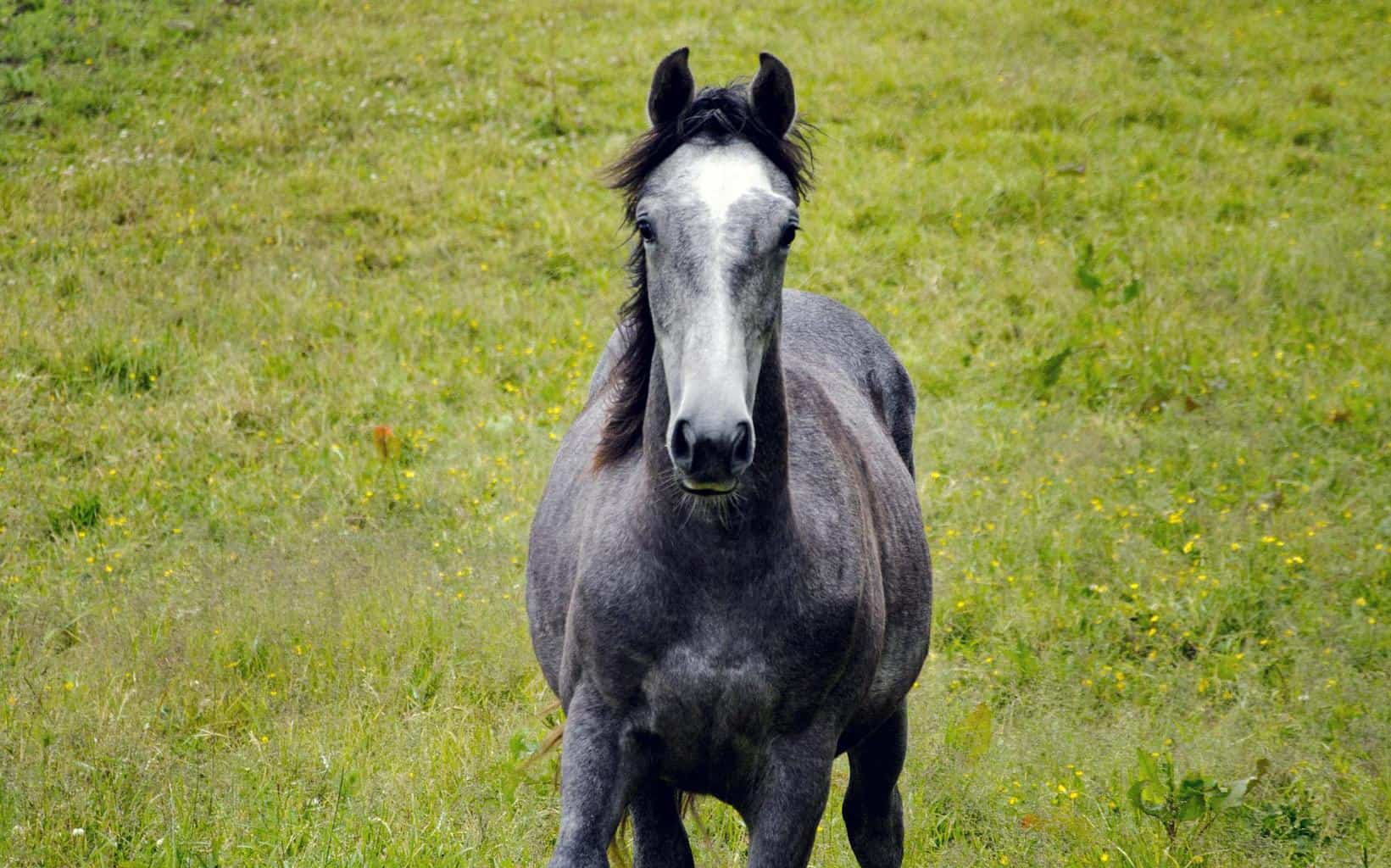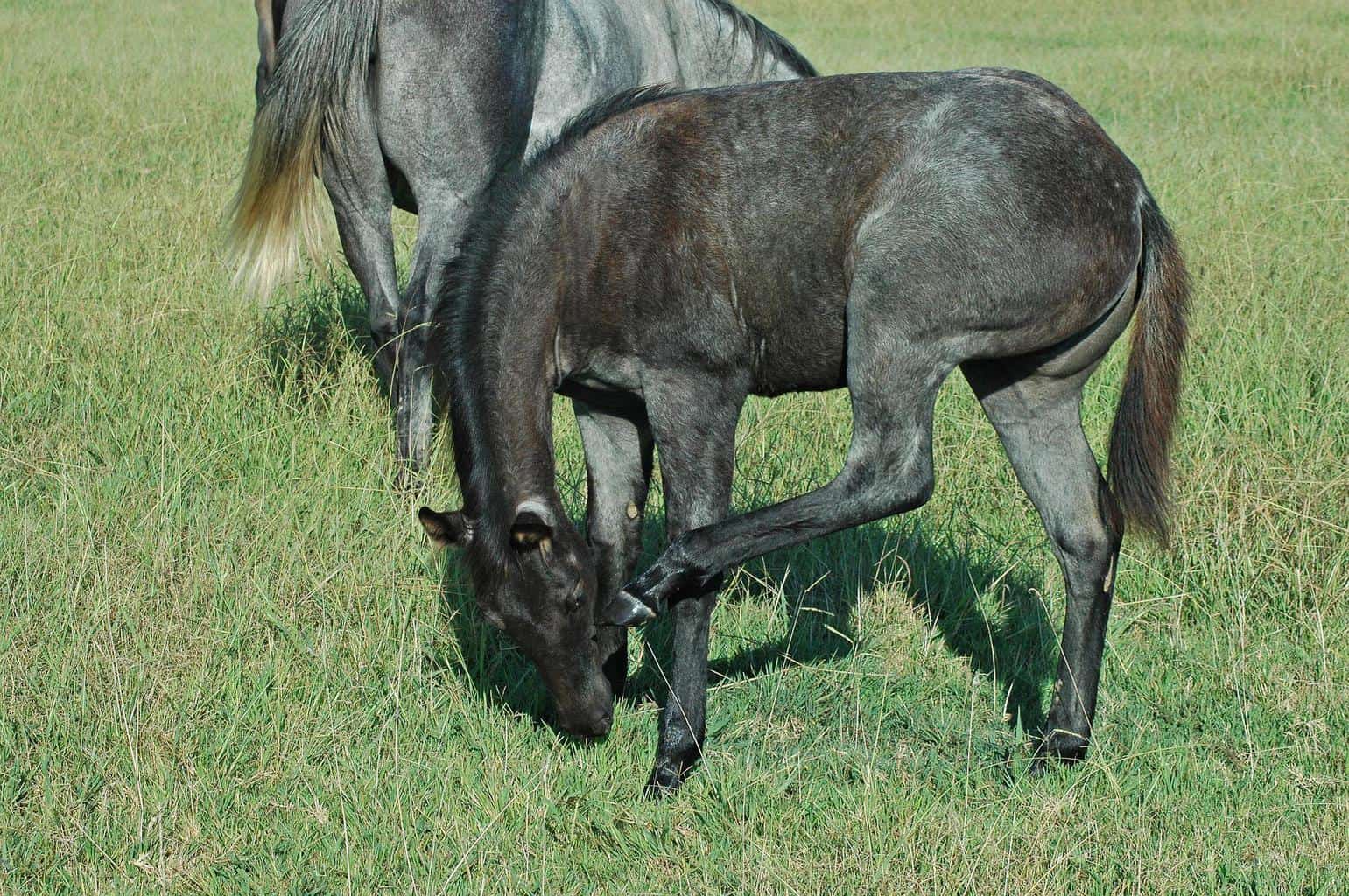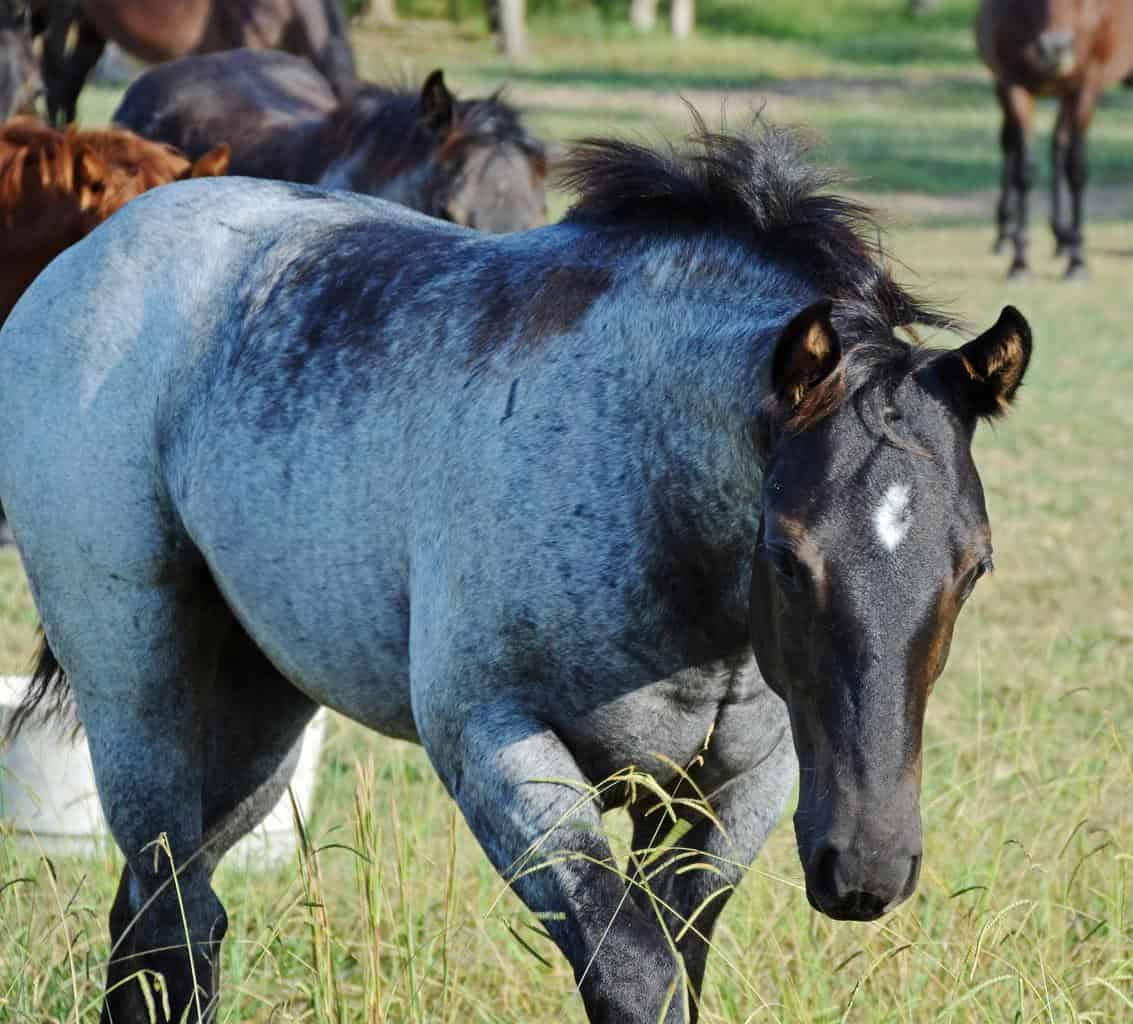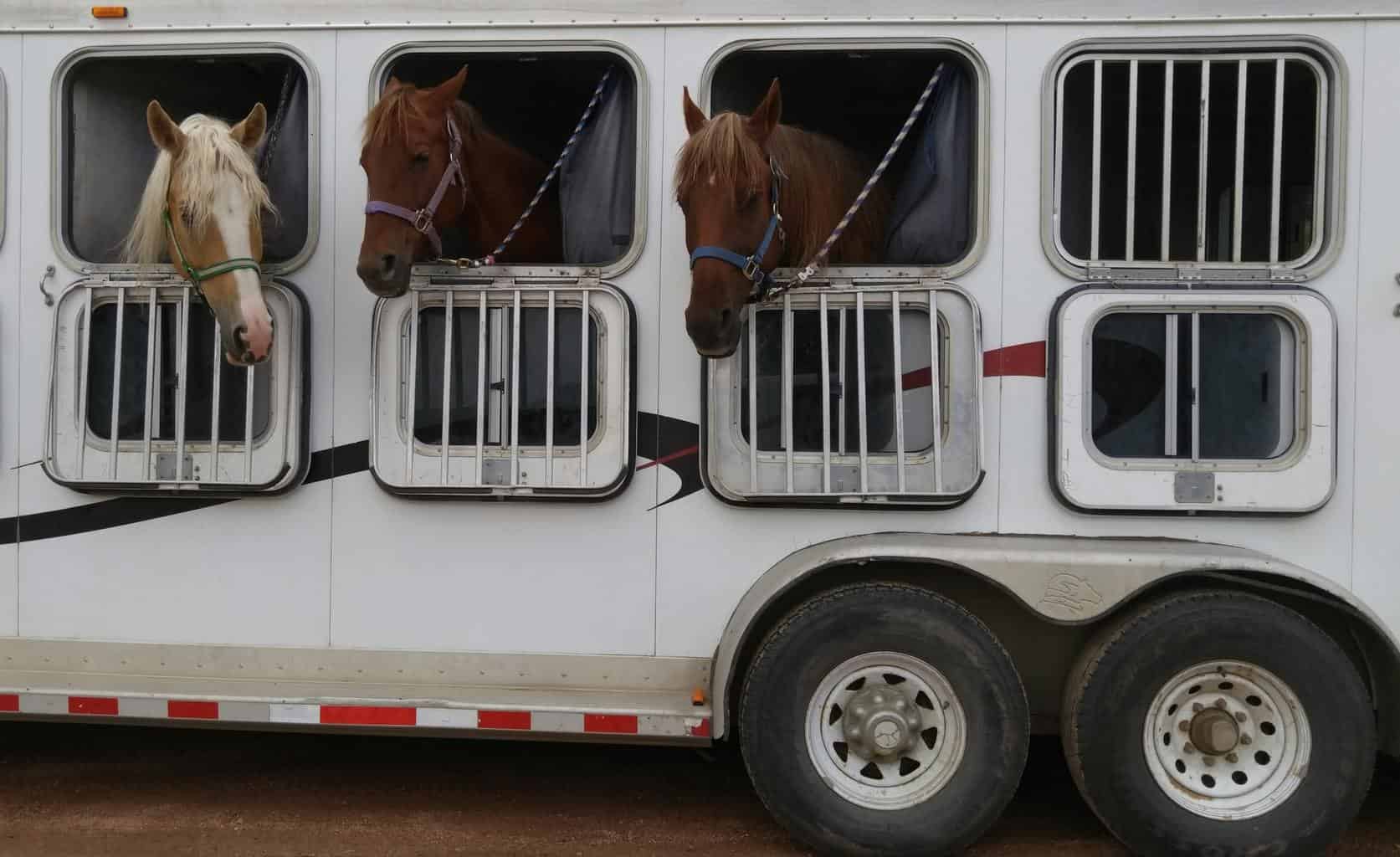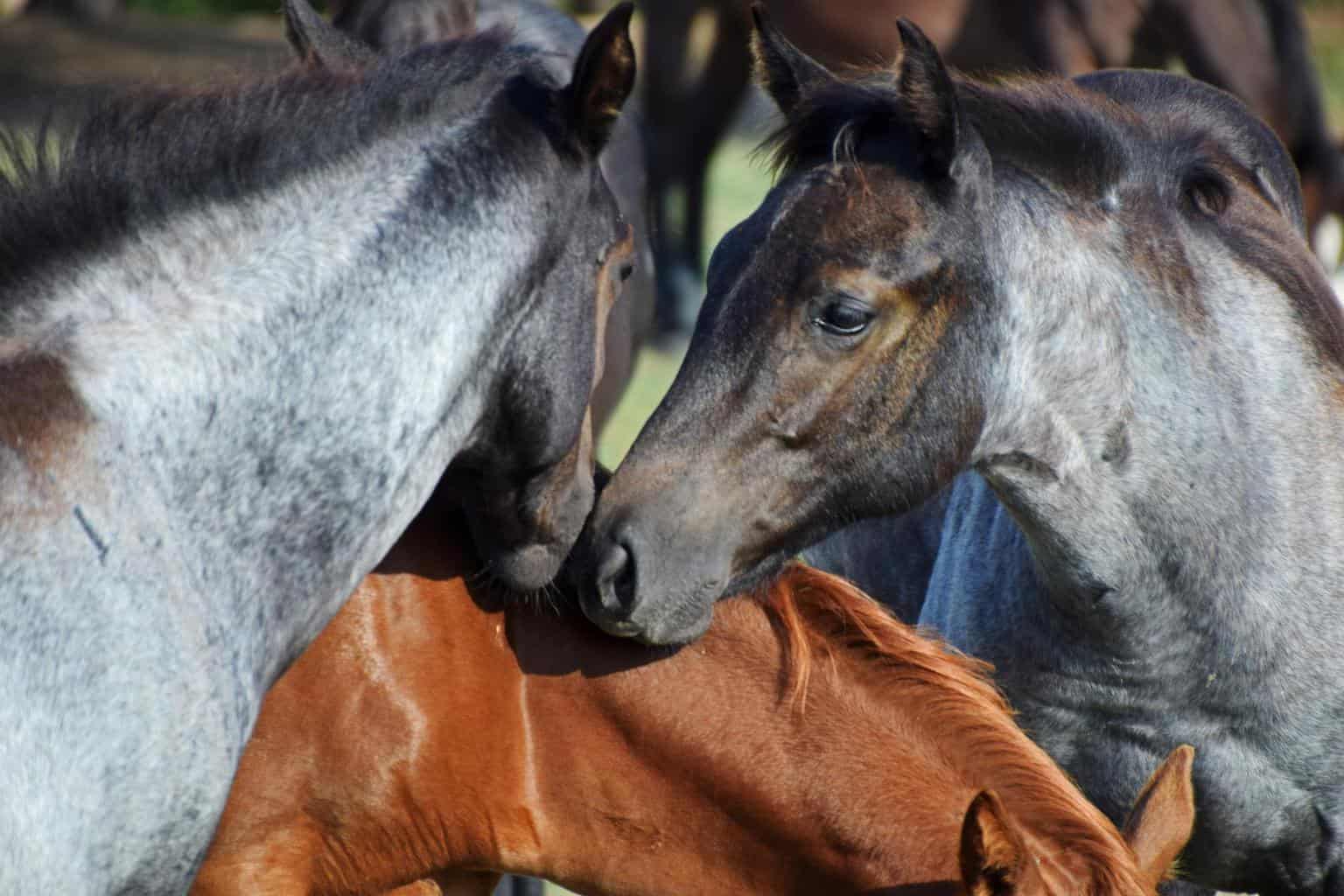- Best Antibiotics for Horse Wounds: What to Expect When Your Horse Has an Injury - September 20, 2023
- Bronco vs Mustang Horse: Are They the Same? - September 8, 2023
- Thoroughbred vs Quarter Horse - September 8, 2023
If you have ever seen a Blue roan horse, then you’ll appreciate that this horse is simply stunning. The main thing to sets the Blue roan apart from the rest is that its coat exhibits a unique duality when it comes to color. The coat of the Blue roan features equal parts of black and white; no blue color at all. The base coat of the Blue roan is black, with white hairs to complement, and this gives the appearance of a bluish tone – hence the name.
In my Blue roan guide, you will learn everything you need to know, including history, popularity, how to identify, fun facts, and which breeds have Blue roan horses in their catalog.
What is a Blue Roan Horse?
Blue roan horses are present in many equine breeds. They’re easily identifiable by their color pattern, which is a 50/50 blend of black and white coloring; that results in an almost blue appearance. The head and legs of a Blue roan are the darkest part of the body, with little-to-no white hairs.
The term ‘roan’ refers to a specific pattern found in some horses with a dominant roan gene. When horses are born with a deeply shaded coat that later transitions to a darker shade like dark gray or black, this horse will be referred to as a Blue roan.
Blue Roan Quick Stats
| Species | Horse |
| Horse Family | Equidae |
| Horse Breed | Paint horses, Percheron, Paso Finos, American Quarter Horse, Welsh Pony, Standardbred, Mustang, Belgian, and Tennessee Walking horse. |
| Common Names |
|
| Country of Origin | Mostly North America, but also found in European Breeds. |
Blue Roan Overview
The Blue roan is (arguably) the most attractive of all the roans. They’re a rarer find due to the genetic making needing to be so precise that breeding can be challenging. Consequently, this makes a Blue roan one of the more valuable roans.
A Blue roan will have been roan from birth and been born with a solid black coat which will lighten over time. As the foal ages, the legs and head will remain dark black, but the rest of the body will transition to a lighter gray or white color. Blue roans have a very equal mix of dark and light coloring, which results in indigo or blue appearance.
How to Identify a Blue Roan Horse
Due to the fact that Blue roans are extremely rare, they’re often mislabeled. People can assume that gray horses are automatically a roan when this is rarely the case. You should look at the head to tell the difference between a standard gray and a roan coloring. A typical gray will have a lighter head than its body, but this is reversed for a roan.
Blue roans will also never include sabino, rabicano, or varnish patterns.
Blue roan horses are common in North American breeds like the Tennessee Walking horse, Mustang, Quarter Horse, and Standardbred.
Blue Roan Lifespan
Because Blue roans can be found in many different breeds of horses, it is difficult to determine their lifespan. However, in general terms, you can expect between 25 to 30 years of life from a Blue roan. In some very rare cases, domestic horses have been known to live into their 60s (double the lifespan of wild horses).
Many factors affect the lifespan of a domestic horse, including:
- Nutrition
- Breeding
- Health Including Dental Health
- Physical Activity Level
There are many things you can do as an owner that will have a positive impact on the lifespan of your Blue roan horse.
Nutrition
A horse needs a balanced diet with just the right amount of carbohydrates. Hay and grasses should make up the bulk of the nutrition, but vegetables, fruits, concentrates, and salt can enhance their diet.
Veterinary Care
Like all animals, horses will require veterinary care and vaccinations to keep them in good physical health and free from diseases. You may need additional vaccinations if you’re traveling with your horse.
It is a good idea to check their manure for worms and keep them dewormed with medication. Horses require their teeth filed and checked at least once a year, but preferably twice.
Housing
It may seem obvious, but some owners overlook the need for basic shelter and sufficient housing for their horses, and without this, their lifespan is negatively affected. More than this, horses have a right to adequate housing under American law.
A horse needs a three-sided shelter with free access to enter. A better solution is a fully insulated building or barn.
Exercise
Horses need regular physical activity to keep them in the best condition. No horse should spend their days cooped up in a barn, but it’s important not to over-exercise a horse and put unnecessary pressure on joints and limbs.
Blue Roan Appearance and Varieties
The Blue roan is almost a mythical-looking creature and one to certainly stand out from other horses. Its coat is a subtle blending of two colors, most likely black and white, but it could also be very dark and very light gray.
Blue roans are found in some Northern American and European breeds, such as:
- Paint horses
- Percheron
- Paso Finos
- American Quarter Horse
- Welsh Pony
- American Standardbred
- Mustang
- Belgian
- Tennessee Walking Horse.
Blue Roan Human Interactions and Training
Blue roans tend to be found more in the robust, working breeds, which means you’ll likely have a strong horse with copious amounts of stamina and a fine balance between obedience and independence. However, smaller horse breeds such as the Welsh Pony – which stands at 12-hands – are also known to have Blue roan horses in their family.
A more experienced handler would be best suited to owning a Blue roan simply because you can’t be sure what kind of horse you will end up with. Basing a decision on coloring alone is unwise.
Blue Roan Diet
Horses need to have small meals throughout the day and continuous access to fresh water. Grains should be included in the diet, but sparingly as they are high in carbohydrates. Too many grains and your horse can end up with joint problems; too little and they won’t have sufficient energy.
If traveling with horses, it’s essential to stick to their existing diet on the road, as a sudden change can cause digestive problems.
Blue Roan Breeding
Blue roans have been around a long time, but they’re certainly not one of the longest established horses we know. Blue roans were first genetically identified in 1977 in a group of Belgian horses as a separate horse variation. And this is the reason that the Belgian horse is termed as a primary ancestor of this horse.
For a Blue roan to be born, at least one of its parents must be a black horse carrying a roan gene.
Blue Roan Cost
Due to the rarity of Blue roans, they’re not a cheap find. Buying a Blue roan horse could cost between $4000 and $20,000. However, you may find the cost a little less if you purchase a foal that has not yet developed the Blue roan coloring.
While it is true that the desirable coat coloring can drive the price up, more experienced equestrians may argue that the color shouldn’t impact the cost. More important factors should include a horse’s conformation: body proportions and structure, pedigree, and training level.
Where to Buy a Blue Roan Horse
No longer do you have to trawl down to horse fairs and shows when you’re looking to buy a new horse. Today, we can do it from our favorite armchair and entirely online – cautiously.
Here’s a shortlist of my favorite horse buying websites:
Equine Now
With Equinenow, you can filter your search via your individual criteria to make the results more relevant. Search by state, gender, color, skill level, age, height, and price range, to see more applicable listings.
Exchange Hunter Jumper
At exchangehunterjumper, all listings are screened to ensure quality media and legitimate show records are available.
Equine
Equine features horses from all over the US available right now. You can search via disciplines, price, state, and breed, plus use their search bar to place specific keywords – such as Blue roan.
Dream Horse
Dreamhorse is a very user-friendly website with advanced search functions to make your experience more straightforward. The site is regularly updated and has good descriptions with each horse’s advert.
Horse Plus Humane Society
Give a horse a second chance at horseplushumanesociety. There are many benefits to adoption, such as a lower financial outlay and the fact that the horse will have undergone trainer and veterinarian evaluations and come with full disclosures of any behavior problems.
FAQs
Answer: Blue roan horses are comparatively pretty rare, but you won’t be searching a long time to find one. This is because Blue roans are found in abundance across the country and in various parts of the world.
Answer: The only way to really tell is visually; as there are so many breeds to have this coloring, a DNA test will not tell you much. You’re looking for darker legs and head (black or very dark gray) with a lighter body (white or very light gray).
Answer: Actually, no. When a blue roan is cut or scraped on the white part of its body, the hairs to grow over the scar will be black with no white. This creates a black mark over the coloring, which contrasts with most other colors, which would have white or lighter colored hair regrowth.


